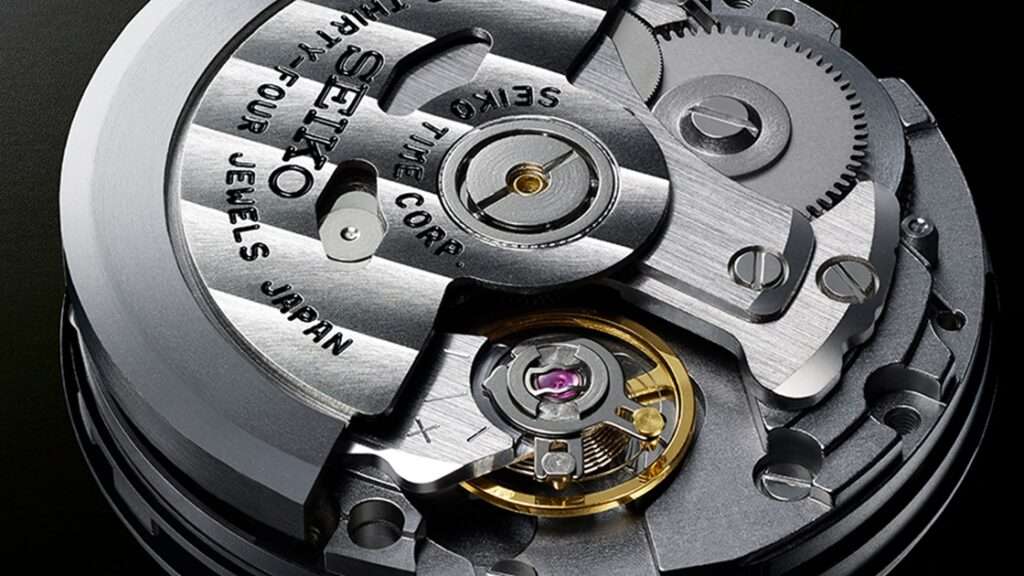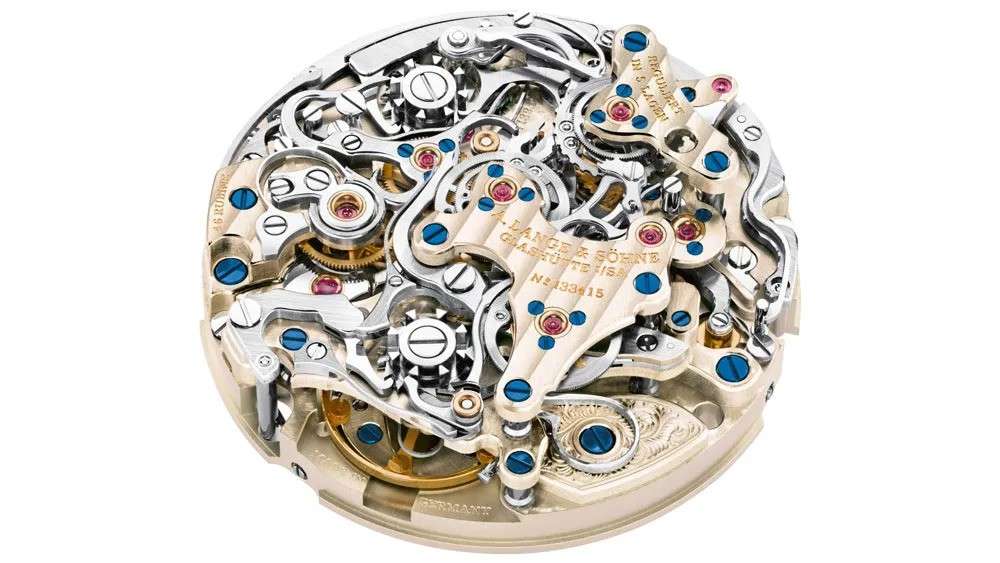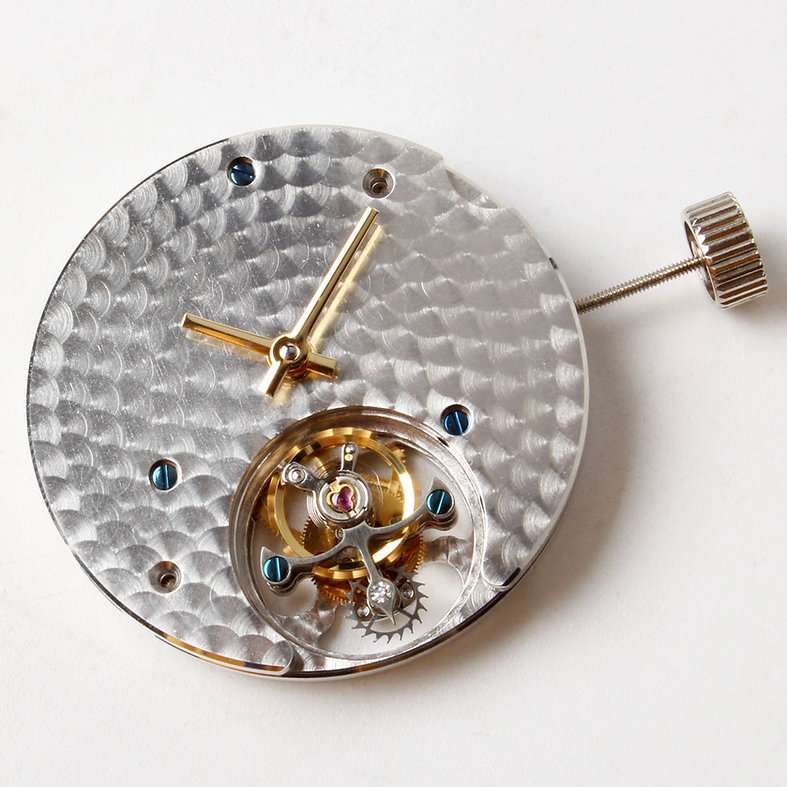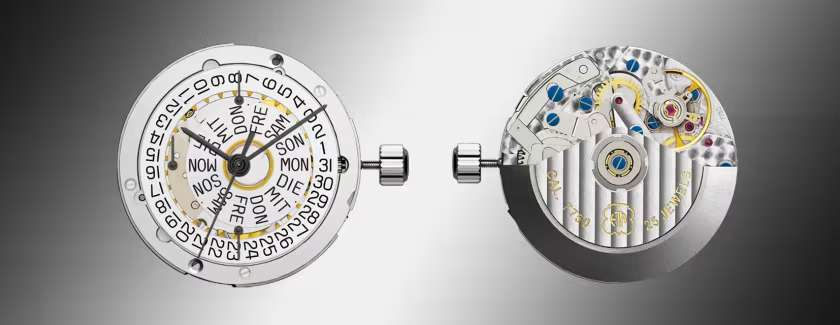The heartbeat of any timepiece lies in its movement, an intricate ballet of gears and springs working in unison to mark the passage of time. In the realm of horology, the movement is not just a functional component; it’s the soul of the watch, a testament to the artistry and engineering prowess of its creators. From the prestigious Swiss watch houses to innovative boutiques and emerging manufacturers, each has contributed to the rich tapestry of watch movements.
In this comprehensive exploration, we delve deep into the various types of watch movements, unraveling their mysteries and marveling at their complexities. We’ll journey from the well-trodden paths of traditional Swiss and Japanese movements to the less explored territories of boutique and specialized mechanisms. Along the way, we’ll uncover the allure of high-end luxury movements and the ingenuity behind some of the most complex complications, such as tourbillons and minute repeaters.
This narrative is more than a technical overview; it’s a tribute to the art of watchmaking, celebrating the diverse ways in which watchmakers around the world keep time in motion.
Traditional and Mainstream Movements
Swiss Movements: A Legacy of Precision and Elegance
The world of Swiss watch movements is a realm where precision engineering meets artistic craftsmanship. These movements, known for their complexity and elegance, are the cornerstone of traditional luxury watchmaking.
The Essence of Swiss Movements:
- Precision Craftsmanship: Swiss movements, exemplified by brands like ETA and Sellita, are celebrated for their intricate assembly and meticulous attention to detail. These mechanisms are the product of centuries of horological expertise.
- ETA’s Dominance and Diversity: Owned by the Swatch Group, ETA has become synonymous with Swiss movements, providing calibers for a wide range of brands. Its movements are revered for their reliability and versatility.
- Sellita’s Rise: In response to ETA’s dominance and to meet the growing demand for Swiss movements, Sellita has emerged as a formidable player, offering movements that are often seen as direct alternatives to ETA calibers.
Rolex’s Movement Evolution:
- Beyond ETA: While Rolex initially used movements from external suppliers like ETA, it has, over time, developed its in-house calibers. This shift reflects Rolex’s commitment to controlling all aspects of watch production and ensuring the highest standards of quality.
- In-House Expertise: Rolex’s move to in-house production allowed for greater innovation and customization of movements, tailoring them specifically to their watch models’ requirements.
Sellita’s Impact:
- Filling the Void: Sellita has played a crucial role in the Swiss watch movement market, particularly as ETA began to reduce its supply to third-party companies. Sellita’s SW200-1, for example, is a movement that has become a staple in many brands’ collections, known for its reliability and comparable quality to ETA.
We see a landscape marked by precision, innovation, and a deep respect for the art of watchmaking. The movements from ETA and Sellita, along with the in-house developments of brands like Rolex, underscore the rich diversity and expertise inherent in Swiss horology.
The Rich Tapestry of Swiss Watch Movements
In the illustrious world of Swiss watch movements, there’s a wealth of diversity and innovation beyond the renowned ETA and emerging Sellita. Let’s delve deeper into this landscape, exploring other significant contributors like Valjoux, and their impact on the realm of watchmaking.
Valjoux – The Chronograph Specialist:
- A Storied Past: Valjoux, a name synonymous with high-quality chronograph movements, has a storied history in Swiss watchmaking. Known for their precision and durability, Valjoux movements have been the choice for many prestigious brands.
- Valjoux 7750 – A Horological Icon: Perhaps the most famous of Valjoux’s offerings is the Valjoux 7750. Introduced in the 1970s, this automatic chronograph movement is celebrated for its reliability and has been the foundation for countless timepieces, both luxury and affordable.
Diversity Among Swiss Movements:
- From ETA to Sellita and Valjoux: The landscape of Swiss movements is rich and varied. While ETA has been a dominant force, the rise of Sellita and the enduring presence of Valjoux highlight the industry’s dynamism.
- Competition and Collaboration: This diversity fosters both competition and collaboration within Swiss horology, driving innovation and ensuring a range of options for watchmakers and enthusiasts.
The Shift to In-House Movements:
- Beyond Suppliers: Many luxury Swiss brands, including Rolex, have moved towards creating their in-house movements. This shift allows for greater control over quality and design, leading to unique and innovative calibers.
- A Blend of Tradition and Innovation: These in-house movements often blend traditional watchmaking techniques with modern technological advancements, showcasing the brands’ commitment to excellence and innovation.
In this comprehensive look at Swiss movements, we see a world where tradition meets innovation. From the robust and reliable calibers of ETA and Sellita to the specialized chronograph expertise of Valjoux, Swiss movements represent a pinnacle of horological achievement. They embody the spirit of precision, craftsmanship, and innovation that has long defined Swiss watchmaking.
The Swiss watchmaking industry is renowned for a variety of other significant movements beyond ETA, Sellita, and Valjoux. These movements are often characterized by their exceptional craftsmanship and innovation. Here are a few notable ones:
- Patek Philippe Calibers:
- Renowned for their complexity and precision, Patek Philippe’s in-house movements are among the most prestigious in the watchmaking world. Each movement is meticulously hand-finished and often features intricate complications.
- Audemars Piguet:
- Audemars Piguet, particularly famous for its Royal Oak series, develops its own movements. These are known for their exceptional craftsmanship and often include complex features like perpetual calendars and minute repeaters.
- Vacheron Constantin:
- As one of the oldest watch manufacturers in the world, Vacheron Constantin is known for its highly intricate and beautifully crafted movements, often found in ultra-thin and complicated watches.
- Jaeger-LeCoultre:
- Jaeger-LeCoultre is renowned for its innovative and technically sophisticated movements, including some of the world’s most complicated calibers. The brand’s Reverso and Master series feature in-house movements with a wide range of complications.
- Zenith El Primero:
- The El Primero movement by Zenith is one of the most famous chronograph movements in the world, known for its high frequency and the distinction of being the first integrated automatic chronograph.
- Frederique Constant:
- Frederique Constant has gained recognition for producing accessible luxury watches with in-house movements. They often feature open-heart designs and moonphase complications.
Each of these movements contributes to the rich tapestry of Swiss watchmaking, showcasing the blend of traditional craftsmanship with modern innovation that defines Swiss horology.
The Relationship Between Valjoux and ETA
Valjoux and ETA: A Union in Swiss Horology
In the intricate tapestry of Swiss watch movements, the relationship between Valjoux and ETA is a pivotal chapter that deserves special attention. Valjoux, originally an independent company renowned for its chronograph movements, particularly the Valjoux 7750, became part of ETA after a series of mergers and acquisitions within the Swiss watch industry.
The Integration of Valjoux into ETA:
- Historical Context: Valjoux, established in the early 20th century, gained fame for its reliable and precise chronograph movements. The Valjoux 7750, introduced in the 1970s, became one of the most widely used chronograph calibers in the watch industry.
- Merging Paths: In the 1980s, Valjoux became part of the ETA, which itself is a subsidiary of the Swatch Group. This merger brought Valjoux’s expertise in chronograph movements under the umbrella of ETA, further solidifying ETA’s position as a leading movement manufacturer.
The Legacy Continues Under ETA:
- Valjoux 7750 – An ETA Staple: Under ETA, the Valjoux 7750 has been maintained and further developed. It remains a staple in the industry, known for its robustness and versatility, and is used by numerous watch brands across various price points.
- Innovation and Evolution: The integration of Valjoux into ETA has allowed for continued innovation and development of chronograph movements, ensuring that the legacy of Valjoux’s craftsmanship continues to thrive within the modern watchmaking landscape.
Japanese Movements – The Harmony of Precision and Accessibility
The Rise of Japanese Watchmaking Excellence
In the realm of horology, Japanese movements stand as a testament to precision, innovation, and accessibility. Brands like Seiko, Citizen, and Casio have redefined the global watch market, offering high-quality movements that cater to a broad audience. Let’s delve into the world of Japanese watch movements and their unique contributions to watchmaking.

Seiko’s Horological Innovations:
- A Legacy of Precision: Seiko, a pioneer in Japanese watchmaking, has a rich history of innovation, including the development of the first quartz watch – the Seiko Astron.
- Mechanical and Quartz Movements: Seiko produces a range of movements, from the robust and affordable Seiko 5 mechanical series to the highly accurate and revolutionary Spring Drive technology.
Citizen’s Eco-Drive Technology:
- Revolutionizing Power Sources: Citizen is renowned for its Eco-Drive technology, which transformed watch power sources by using light, eliminating the need for battery replacements.
- A Focus on Sustainability: Eco-Drive movements underscore Citizen’s commitment to innovation and environmental sustainability, appealing to a modern, eco-conscious audience.
Casio’s Digital Prowess:
- Digital and Solar Movements: Casio has been at the forefront of digital watch technology, with its G-Shock and Wave Ceptor series featuring rugged, solar-powered movements and radio-controlled timekeeping.
- Innovative Features: Casio’s movements are known for their durability and a wide array of features, catering to both casual wearers and professional users with specific needs like shock resistance and water resistance.
The Broader Impact of Japanese Movements:
- Democratizing Quality Watchmaking: Japanese movements have played a crucial role in making quality watchmaking accessible to a wider audience, offering reliable and innovative timepieces at various price points.
- Global Influence: The influence of Japanese movements extends beyond their domestic market, challenging Swiss dominance and contributing to a more diverse and dynamic global watch industry.
In exploring Japanese watch movements, we uncover a world where technological innovation harmoniously coexists with accessibility and reliability. Brands like Seiko, Citizen, and Casio have not only expanded the horizons of what’s possible in watchmaking but have also brought quality timekeeping within the reach of watch enthusiasts around the world.
High-End and Luxury Movements (Expanded Narrative)
In the Realm of Horological Masterpieces: Swiss Luxury and Boutique Brilliance
In the rarefied air of high-end watchmaking, every movement is more than a mere keeper of time; it’s a statement of history, a testament to unmatched craftsmanship, and a beacon of innovation. As we delve deeper into the world of Swiss luxury and boutique watch movements, we enter a domain where each tick is a poetic echo of centuries-old tradition and each gear’s turn, a symbol of horological advancement.
The Art of Swiss Luxury – Precision and Prestige Intertwined:
- Patek Philippe’s Horological Artistry: In the hallowed halls of Patek Philippe, watch movements are not just assembled; they are lovingly crafted with a precision that borders on the obsessive. The Calatrava collection, for instance, is a showcase of the brand’s commitment to excellence. Each movement is an intricate ballet of gears and springs, meticulously hand-finished and decorated, reflecting a heritage that has been revered for generations.
- The Audemars Piguet Legacy: The storied brand of Audemars Piguet, famed for its iconic Royal Oak series, embodies the fusion of bold design and mechanical ingenuity. Inside each Audemars Piguet watch beats a heart of in-house movements, designed not only to keep precise time but to do so with an elegance that is unmistakably haute horlogerie. The intricate complications and avant-garde aesthetics speak of a brand unafraid to redefine the boundaries of traditional watchmaking.
Boutique Movements – Where Innovation Meets Artisanal Skill:
- A. Lange & Söhne’s German Engineering: The name A. Lange & Söhne is synonymous with German precision and timeless design. In their Glashütte workshops, horological art comes to life in the form of the Lange 1 series, among others. Here, movements are not just engineered; they are composed like symphonies, with each part playing its role to perfection, embodying a harmonious blend of heritage and innovation.
- Richard Mille’s Visionary Creations: In the ateliers of Richard Mille, the future of watchmaking is being written today. Each watch is a testament to what happens when daring design meets pioneering technology. The brand’s movements are not mere timekeepers; they are marvels of modern engineering, crafted with materials borrowed from aerospace and Formula 1, pushing the very limits of what a timepiece can be.

A Celebration of Craftsmanship:
- Meticulous Detail, Unmatched Quality: In this echelon of watchmaking, every screw, every plate, every bridge is crafted and finished with an attention to detail that verges on the sacred. These movements are the culmination of countless hours of labor, imbued with the expertise of master watchmakers.
- The Rarity of Excellence: Many of these high-end movements are produced in limited numbers, adding to their allure. Owning one of these timepieces is not just a matter of luxury; it is a privilege, a membership into an exclusive club of connoisseurs who appreciate the finest things life has to offer.
In the world of high-end and luxury movements, time is more than seconds, minutes, and hours; it’s a legacy carried on the wrist, a legacy of unrivaled craftsmanship and enduring elegance. As we leave this world of Swiss luxury and boutique brilliance, we carry with us an appreciation for the artistry that defines this pinnacle of watchmaking.
Complications in Movements
The Symphony of Complexity: Tourbillons, Minute Repeaters, and Beyond
In the intricate world of horology, complications in watch movements are not just functional features; they are a symphony of mechanical complexity, a dance of gears and springs that enchant the connoisseur and casual observer alike. From the mesmerizing rotations of a tourbillon to the melodious chimes of a minute repeater, these complications are the pinnacle of watchmaking artistry.
The Enigmatic Tourbillon – Gravity’s Elegant Foe:
- A Ballet of Balance and Precision: The tourbillon, a captivating invention by Breguet in the 18th century, was designed to counteract the effects of gravity on a watch’s accuracy. In this intricate mechanism, the escapement and balance wheel rotate within a cage, mesmerizing the viewer with its delicate, constant motion.
- From Swiss Opulence to Accessible Luxury: While traditionally found in high-end Swiss timepieces, the tourbillon has become more accessible thanks to innovative manufacturing, particularly from Chinese watchmakers. This democratization of the tourbillon allows a broader audience to appreciate its complexity and beauty.
The Minute Repeater – A Chorus of Time:
- An Auditory Delight: The minute repeater is a marvel of horological complexity, allowing the watch to chime the time upon command. This complication requires exceptional skill to create, as it involves intricate systems of racks and gears that translate time into melodious sounds.
- The Craftsmanship of Sound: Brands like Vacheron Constantin and Patek Philippe excel in creating minute repeaters, where the clarity and richness of the chime are as important as the visual appeal of the mechanism.
Chronographs – The Art of Precision Timing:
- Racing Against Time: Chronographs, with their ability to measure short time intervals, have become a staple in sports and aviation watches. The complexity of a chronograph movement lies in its additional components, like pushers and sub-dials, which allow for timing functionality.
- Innovations and Variations: From the classic Valjoux 7750 to modern interpretations by brands like Omega and TAG Heuer, the chronograph remains a beloved complication, constantly evolving with new technological advancements.
The Orchestra of Intricacy: A World Beyond Tourbillons and Chronographs
The world of watch complications is vast and varied, each adding its unique melody to the orchestra of mechanical watchmaking. Alongside the tourbillon’s balletic rotations, the minute repeater’s chime, and the chronograph’s precise timing, there are other marvels of engineering that elevate the art of horology.
Perpetual Calendars – The Eternal Dance of Dates:
- Masters of Accuracy: Perpetual calendars are one of the most complex and revered complications. They accurately display the date, automatically adjusting for months with fewer than 31 days and even accounting for leap years.
- Examples of Excellence: Watches like the Patek Philippe Perpetual Calendar Chronograph and the Audemars Piguet Royal Oak Perpetual Calendar showcase this complication’s sophistication, combining elegance with technical mastery.
Moon Phase Indicators – Celestial Harmony on the Wrist:
- A Window to the Heavens: Moon phase complications provide a poetic representation of the lunar cycle on the watch face, connecting the wearer with the celestial movements.
- Elegance in Display: The Jaeger-LeCoultre Master Ultra Thin Moon and the A. Lange & Söhne Lange 1 Moon Phase are exquisite examples of this complication, blending astronomical accuracy with aesthetic beauty.
Power Reserve Indicators – The Gauge of Endurance:
- Monitoring the Unseen Energy: Power reserve indicators inform the wearer of the remaining energy stored in the watch’s mainspring, a particularly useful feature for manual wind watches.
- Functional Elegance: The Vacheron Constantin Patrimony and IWC Portugieser Automatic are notable examples, elegantly integrating this practical complication into their sophisticated designs.
In the world of watch complications, each feature, whether a tourbillon, a minute repeater, or a chronograph, tells a story of human ingenuity and the relentless pursuit of horological perfection. These complications are not just mechanisms; they are the heartbeats of masterpieces, echoing the legacy of centuries of watchmaking.
The Future of Watch Movements
Innovation and Evolution: Charting the Path Forward in Horology
As we gaze into the horizon of watchmaking, the future of watch movements appears as a fascinating fusion of tradition and innovation. This section explores emerging trends and potential advancements in watch movements, considering how they might shape the future of timekeeping.
Technological Advancements and Hybrid Movements:
- The Rise of Smart Hybrids: The future may see an increasing blend of mechanical and digital technologies, leading to hybrid movements that offer the best of both worlds – the charm of mechanical movements with the functionality of smart technology.
- Innovations in Energy Efficiency: Research in energy storage and efficiency could revolutionize mechanical movements, leading to longer power reserves and more reliable timekeeping.
Sustainable and Ethical Watchmaking:
- Eco-Friendly Materials: As environmental consciousness grows, watchmakers might embrace sustainable materials for movements and cases, reducing the ecological footprint of their timepieces.
- Ethical Sourcing: The sourcing of materials, particularly precious metals and gemstones, is likely to come under greater scrutiny, pushing the industry towards more ethical practices.
Personalization and Customization:
- Tailored Timekeeping: Advances in manufacturing technologies, such as 3D printing, could allow for greater customization of watch movements and components, catering to individual preferences and specifications.
- Interactive Features: We might see movements with customizable settings, controlled via digital interfaces, allowing wearers to personalize their watch experience.
The Continuation of Traditional Craftsmanship:
- Preserving Artisanal Skills: Despite technological advances, there will always be a place for traditional craftsmanship in watchmaking, with brands continuing to celebrate and preserve these skills.
- Limited Editions and Collector’s Pieces: High-end mechanical movements, especially those with complex complications, are likely to remain highly sought after, with brands producing limited edition pieces that are as much art as they are timepieces.
In contemplating the future of watch movements, we envision a landscape where innovation enhances tradition, where new technologies coexist with time-honored craftsmanship. The future of horology is not just about keeping time; it’s about continuing a legacy of innovation, precision, and beauty in watchmaking.
The Rise of Chinese Watch Movements
Emerging Powerhouse: The Ascension of Chinese Horology
In recent years, the global watch industry has witnessed the remarkable ascent of Chinese watch movements, marking a notable shift in the horological landscape. Once predominantly recognized for mass-produced, affordable timepieces, Chinese watchmakers have steadily climbed the ranks, now producing movements that rival their Swiss and Japanese counterparts in terms of quality and innovation.
The Seagull Movement – Bridging the Gap:
- Global Recognition: The Seagull movement, manufactured by the Tianjin Watch Factory, has garnered international acclaim, particularly for its tourbillon movements. These movements have shattered the long-held belief that high complexity and affordability cannot coexist in watchmaking.
- Democratizing the Tourbillon: Seagull’s tourbillon movements have made this once-exclusive complication accessible to a broader audience, offering it at a fraction of the cost of Swiss models. This development has not only democratized luxury watchmaking but has also propelled Chinese movements to the forefront of technical innovation.

Beyond Seagull – A Diverse Horological Landscape:
- Expanding Horizons: Other Chinese manufacturers, such as Beijing Watch Factory and Shanghai Watch Factory, have also made significant strides, producing movements that showcase both technical proficiency and artistic craftsmanship.
- Innovation and Growth: The Chinese watch industry’s commitment to research and development has led to a variety of sophisticated movements, including those with complex features like dual escapements and perpetual calendars.
The Future of Chinese Movements:
- Rising Prestige: As Chinese watchmakers continue to refine their craft, their movements are increasingly being recognized for their quality and innovation, challenging the traditional dominance of Swiss and Japanese movements.
- Global Ambitions: With a focus on expanding their global presence, Chinese watch brands are poised to become significant players in the luxury watch market, offering high-quality timepieces that reflect the evolving dynamics of modern horology.
The Ever-Evolving Journey of Watch Movements
As our exploration of the intricate world of watch movements draws to a close, we stand at the crossroads of tradition and innovation. From the precise engineering of Swiss luxury movements to the pioneering advancements of Japanese horology, each movement we’ve discovered is a testament to the enduring quest for perfection in timekeeping.
The future, bright with the promise of technological innovation and a growing consciousness for sustainability, beckons us forward. Yet, the reverence for traditional craftsmanship and the artistry of mechanical complications remains steadfast, anchoring us to the rich heritage of horology. This dichotomy is not a divergence but a harmonious blend that enriches the world of watches.
As watch enthusiasts and collectors, we find ourselves in an era where choice and diversity in watch movements are more abundant than ever. Whether it’s the classic elegance of a Patek Philippe perpetual calendar, the rugged functionality of a Seiko 5, or the avant-garde design of a Richard Mille, there is a movement that resonates with every style and sensibility.
In the end, watch movements are more than just mechanisms that measure time; they are stories of human ingenuity, symbols of cultural identity, and objects of artistic expression. As we continue to witness the evolution of these marvels, one thing remains certain: the world of watch movements will continue to fascinate, innovate, and inspire for generations to come.

